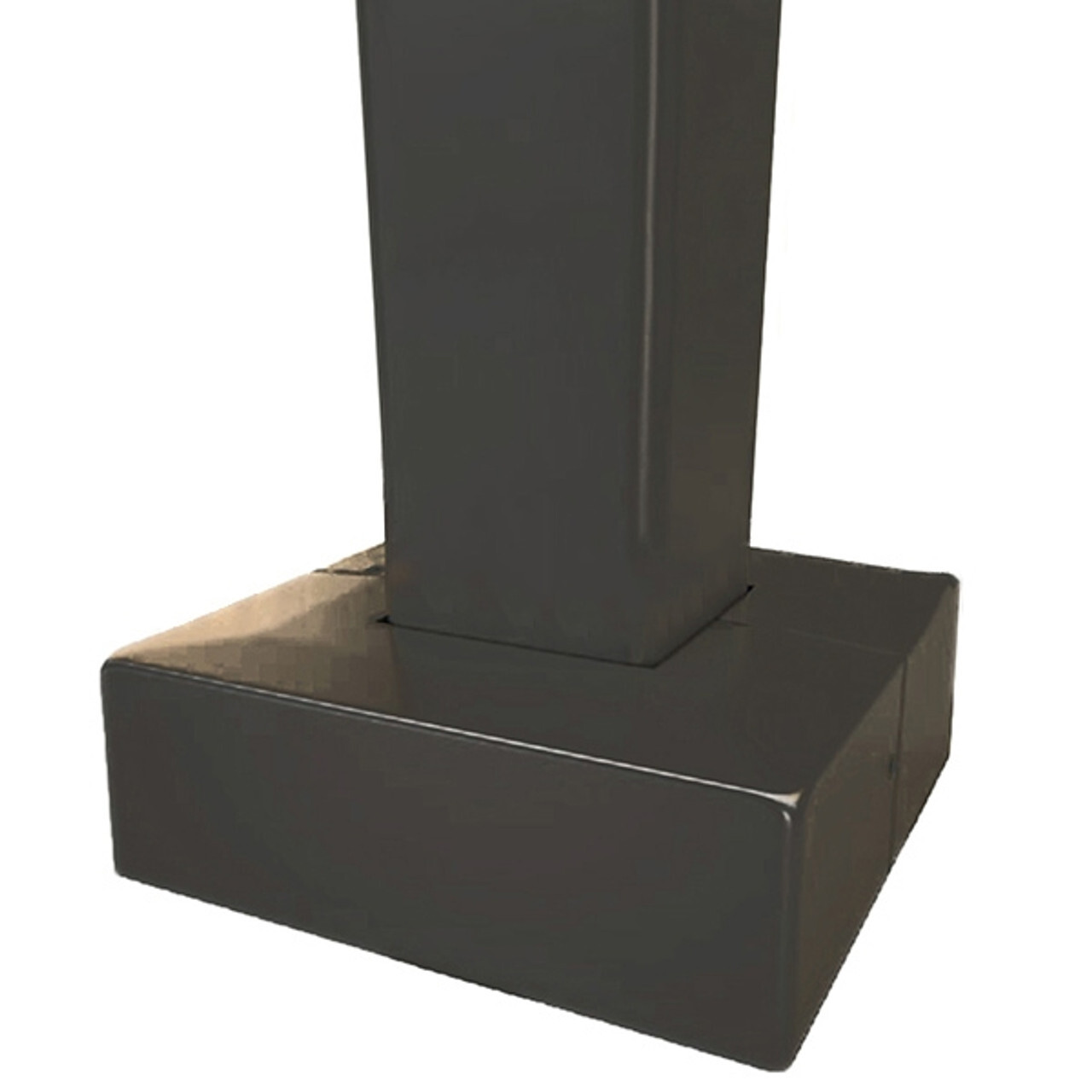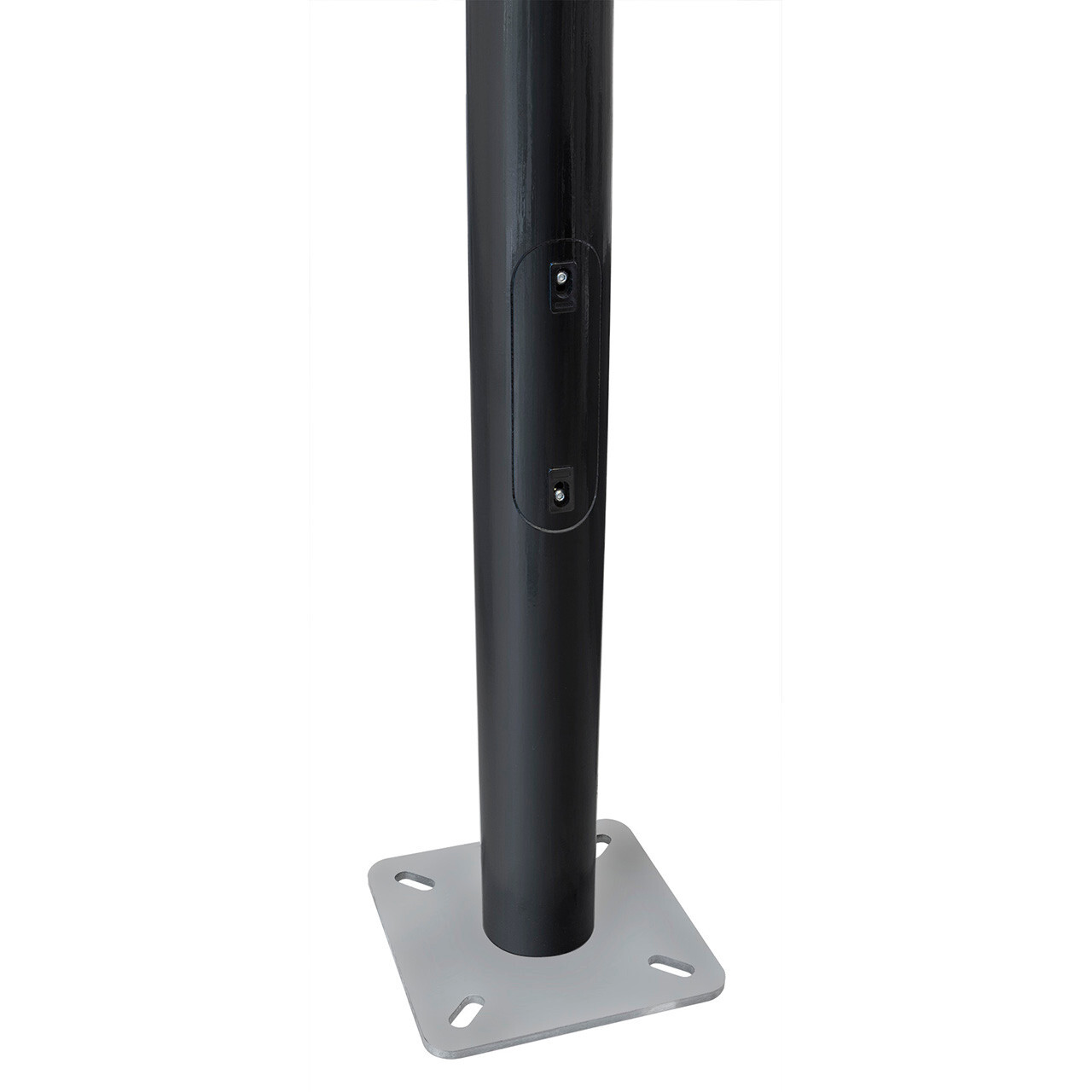Deciding between square or round light poles for your outdoor lighting project typically comes down to its application. On the surface, it would seem like the difference would be negligible if the pole is made from the same material (including steel, aluminum, and fiberglass), but there are some subtle (and not so subtle) differences. This article will break it all down for you to make an informed decision.
What are the structural differences between square and round light poles?
Square poles have four corners and four flat sides, whereas round poles are cylindrical. There are also tapered light poles (square and round) that have a larger width/diameter at the base and a smaller width/diameter at the top.


Which pole shape offers the most strength?
The shape and dimensions of a light pole play a large role in determining its torsional strength. Simply put, torsional strength refers to a material's ability to resist twisting forces. In the case of anchor base installations, a light pole’s shape influences the total force exerted on its base, which is directed towards its anchor bolts and concrete foundation.
For square poles, their 90-degree right angles unevenly distribute stress throughout the material, affecting their strength and ability to withstand stress, with torsional twisting being a concern. When under extreme wind conditions, square poles will lose some of their strength and durability.
For round light poles, wind force exertion is distributed evenly. This makes them strong and durable, more so than square poles when comparing the same weight, especially since round poles are roughly 20% lighter than square poles with the same length, wall thickness, and width/diameter.
Tapered light poles can distribute the weight and the forces acting on the pole more evenly. They are more stable and can better resist torsion compared to a pole with a uniform width/diameter.
Which pole shape offers better wind resistance in commercial settings?
Round poles are more aerodynamic or wind-resistant than square poles because they have rounded sides. Square poles have a greater surface area for wind to exert force on. In the case of round poles, the wind can pass around the pole. This also makes round poles less prone to vibration.
Another advantage that round poles have over square poles is their stress points at the base. High winds concentrate stress on the pole base at the four corners of a square pole, whereas the stress at the base of a round pole is more evenly distributed.
In areas with high wind speeds, like coastal regions, mountainous areas, or open plains, it's essential to have light poles with high torsional strength. If a pole can't handle the twisting forces caused by strong winds, it can pose a serious safety hazard.
Tapered light poles provide the best wind resistance. Their narrow tops have less surface area for wind to blow against, and their wider bases provide better footing than standard poles.
Tapered poles are especially important if the pole is tall (40+ feet). Tall poles have a larger surface area than shorter ones and therefore should be tapered to ensure that they can safely handle high wind conditions. Tapered square poles can better withstand wind conditions than standard square poles. Round (and especially round tapered) light poles offer the best wind resistance of all the options.
How does the shape of a light pole affect its mounting options?
Square poles are easier to drill, bolt, and attach fixtures to than round poles because they have a flush face on four sides. This is especially true for attaching multiple fixtures directly onto the side of the pole. This can include light fixtures and security cameras. In these cases, a direct arm mount is ideal. It gives the pole an aesthetically pleasing “finished” look. Whenever fixtures are only mounted to the side of a pole, a top cap will be required to protect the wiring inside the pole from the elements.
What shape is best suited for my application?
Choosing the right light pole shape will be based on your lighting goals, wind exposure, and layout. Here are our recommendations:
- Round straight light poles are the best choice for applications where a decorative aesthetic or modern look is desired. They are a great choice for roadways, parks, and commercial areas. They are also the best choice for decorative light poles that illuminate city streets and walkways.
- High wind zone areas may require round tapered poles due to their superior wind resistance. They are a great choice for street and area lighting. They are also best used for sports field lighting because they will be taller than street or parking lot lights and have more surface area to account for.
- Square light poles work best for parking lot lighting and pathway lighting. Parking lot light poles are installed using the anchor base method, in which the pole is bolted to a concrete foundation. Square steel light poles are a common type of anchor base pole because they are a stronger and more economical option compared to aluminum or fiberglass light poles.
Are there cost differences between square and round light poles?
A round pole uses less material than a square pole that has the same height, wall thickness, and width/diameter. Therefore, it requires fewer raw materials and is less expensive. It also weighs less than a square pole.
LightMart can help with your outdoor lighting projects.
Here at LightMart, we specialize in light pole-related lighting solutions. Our knowledgeable staff can provide you with commercial light pole design options that are suitable for your project.
Need your light poles quickly? We have quick-ship poles in stock and ready to ship. We also have light pole kits in stock that include poles, light fixtures, and hardware in one easy-to-shop package.
Contact us today!
David DeWald is the E-Commerce Marketing Specialist at LightMart. He has been working in the industrial and commercial lighting industry since 2013 and is based in the greater Chicago area. David specializes in digital product management, web content writing, and product marketing. He regularly publishes lighting industry-related articles on the LightMart blog. You can visit his LinkedIn profile here.
